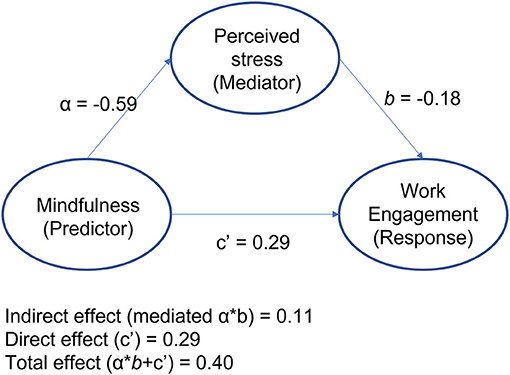Effective Strategies for Managing OCD

Do you find yourself rearranging your belongings in a specific order before leaving the house? Or perhaps you spend hours meticulously scrubbing every inch of your kitchen tiles until they shine brighter than a diamond? If you answered yes (and maybe even chuckled a little at the accuracy), then you may be dealing with the delightful quirks of OCD. But fear not, dear reader, for we have compiled a list of effective strategies to help you reign in those compulsions and reclaim your sanity – or at least fake it ’til you make it!
Recognizing OCD Symptoms
So, you think you might have OCD, huh? Well, let’s break it down for ya with some tell-tale signs to look out for:
Do you spend an excessive amount of time checking and rechecking things like if you locked the door or turned off the stove? This could be a sign that your brain is playing tricks on you. Remember, once is enough (unless you’re baking cookies, of course).
Are you super obsessed with keeping things tidy and in a certain order? Your sock drawer must always be color-coordinated and your bookshelf arranged alphabetically? Sounds like OCD might have your number there, friend.
And let’s not forget about those pesky intrusive thoughts that just won’t quit. Constantly worrying about things that most people wouldn’t give a second thought to? Yep, that could be another clue that OCD is knocking on your brain’s front door.
Understanding the Cycle of Obsessive Thoughts and Compulsive Behaviors
So, picture this: You’re lying in bed, trying to fall asleep, when suddenly your brain decides it’s the perfect time to start obsessing over whether or not you turned off the stove. You KNOW you turned off the stove, but your brain just won’t let it go. You try to distract yourself by counting sheep, but your mind keeps circling back to that darn stove.
Before you know it, you’re out of bed, racing to the kitchen to check the stove for the tenth time that night. And even though you find it turned off, your brain still isn’t satisfied. It starts coming up with all kinds of worst-case scenarios until you finally give in and check the stove once more, just to ease your mind.
And just like that, you’ve entered the vicious cycle of obsessive thoughts and compulsive behaviors. It’s like a never-ending game of mental ping pong, where your brain keeps serving up irrational thoughts and you keep mindlessly batting them away with compulsive actions.
But here’s the thing – breaking free from this cycle is possible. It requires a little bit of effort, a lot of patience, and maybe a dash of humor. So the next time your brain starts fixating on something trivial, try to step back, take a deep breath, and remind yourself that it’s just your brain playing tricks on you. And hey, why not throw in a little dance party while you’re at it? Laughter is the best medicine, after all!

Developing a Personalized Treatment Plan with a Mental Health Professional
When , it’s important to remember that one size does not fit all. Your therapist will tailor your plan to fit your individual needs and goals, but that doesn’t mean you won’t have to put in some work yourself.
Here are a few things to keep in mind as you and your therapist work together to create a plan that’s right for you:
- Be honest: Your therapist can’t help you if you’re not open and honest about your thoughts, feelings, and struggles. Don’t hold back!
- Set realistic expectations: Rome wasn’t built in a day, and neither is your mental health. Be patient with yourself and trust the process.
- Communicate openly: If something isn’t working for you, speak up! Your therapist is there to help, but they can’t read your mind.
Remember, developing a personalized treatment plan is a collaborative effort between you and your therapist. Embrace the journey and trust that you’re on the path to better mental health!

Implementing Exposure and Response Prevention Techniques
So you’ve decided it’s time to face your fears head-on and tackle those pesky OCD symptoms using Exposure and Response Prevention (ERP) techniques. Good for you! Here’s a guide to help you dive right in and start making progress in no time.
**Stay Committed:** Remember, consistency is key when it comes to ERP. Make sure you stick to your exposure exercises and resist the urge to perform compulsions. It may be challenging at first, but the more you practice, the easier it will become.
**Start Small:** Don’t bite off more than you can chew. Begin with exposure exercises that trigger mild anxiety and work your way up to more challenging situations gradually. Baby steps, my friend. You got this!
**Be Creative:** Think outside the box when coming up with exposure tasks. Whether it’s touching a doorknob without washing your hands or leaving a light switch on for an extra minute, get creative with your challenges. The weirder, the better!
mindfulness-and-stress-reduction-strategies-into-daily-routine”>Incorporating Mindfulness and Stress-Reduction Strategies into Daily Routine
Are you tired of feeling stressed out all the time? Do you find yourself constantly overwhelmed by the demands of daily life? It’s time to incorporate some mindfulness and stress-reduction strategies into your daily routine!
First things first, take a deep breath. Inhale, exhale, repeat. Now, let’s tackle some ways to bring more calm and peace into your life:
- Meditation: Find a quiet space, close your eyes, and focus on your breathing. Let go of any racing thoughts and just be in the present moment.
- Gratitude Journal: Take a few minutes each day to write down things you’re grateful for. It could be as simple as a hot cup of coffee in the morning or a kind gesture from a friend.
- Move Your Body: Exercise is a great way to reduce stress and boost your mood. Whether it’s yoga, dancing, or going for a walk, find a physical activity that you enjoy.
Remember, incorporating mindfulness and stress-reduction strategies into your daily routine takes time and practice. Be patient with yourself and don’t get discouraged if you don’t see immediate results. Keep at it, and soon you’ll begin to feel more grounded and at ease in your day-to-day life.
Building a Support System of Understanding and Empathetic Individuals
Are you tired of trying to explain your feelings to people who just don’t get it? Are you tired of hearing the same old cliches like “just cheer up” or “it could be worse”? Well, fear not! It’s time to build a support system of understanding and empathetic individuals who truly understand what you’re going through.
First things first, surround yourself with people who have a heart of gold and a brain to match. Seek out those who are compassionate, kind, and willing to listen without judgment. These are the people who will offer a shoulder to cry on, a listening ear, and a non-judgmental space for you to express your emotions freely.
Next, seek out those who have been through similar experiences and can offer valuable insights and advice. Knowing that someone else has been where you are and has come out the other side can be incredibly comforting and inspiring. Share your struggles and triumphs with this group and watch as your support system grows stronger.
Lastly, remember that it’s okay to lean on your support system when you need a little extra love and understanding. Let them lift you up when you’re feeling down, celebrate with you when things are going well, and remind you that you are never alone in your struggles. is like having your own personal cheer squad – ready to support you through the good times and the bad.
Practicing Self-Care and Patience Throughout the Recovery Process
During the recovery process, it’s important to remember to take care of yourself and practice patience. Here are some tips to help you stay on track:
Take time for yourself: Treat yourself to a relaxing bubble bath, go for a walk in nature, or do something that brings you joy. Remember, self-care is essential for your well-being.
Don’t rush the healing process: Recovery takes time, so be patient with yourself and allow yourself to heal at your own pace. Remember, slow progress is still progress!
Surround yourself with supportive people: Surround yourself with positive and supportive people who lift you up and encourage you throughout your recovery journey. Remember, a strong support system can make all the difference.
FAQs
How can I resist the urge to engage in compulsive behaviors?
Think of your compulsions like that annoying friend who always wants to drag you out to go shopping when you’re trying to save money. You have to put your foot down and say no. Replace those behaviors with something more productive, like a hobby or a Netflix binge.
Is it possible to manage OCD without medication?
Definitely! You can try therapy, exercise, or even meditation to help keep those intrusive thoughts at bay. It’s all about finding what works best for you and sticking to it like glue (but not in a compulsive way).
How can I navigate triggers in my daily life?
Triggers are like landmines waiting to explode, but you can outsmart them. Create a plan of action for when you encounter your triggers, whether it’s deep breathing or doing a little dance. Just remember, you’re the boss, not your OCD.
What should I do if I feel overwhelmed by my OCD symptoms?
Take a breather and remember that you’re not alone in this battle. Reach out to a trusted friend or therapist for support. You can also try distracting yourself with something you enjoy, like baking cookies or playing with a pet. Just don’t use cleaning as a distraction – that’s a slippery slope!
Keep Calm and OCD On!
So there you have it – a few effective strategies for managing OCD and keeping those intrusive thoughts at bay. Remember, Rome wasn’t built in a day, and neither will your progress in managing OCD. Take a deep breath, stay positive, and keep working on implementing these strategies into your daily routine. With a little patience and a whole lot of determination, you’ll be well on your way to conquering OCD like a boss!






